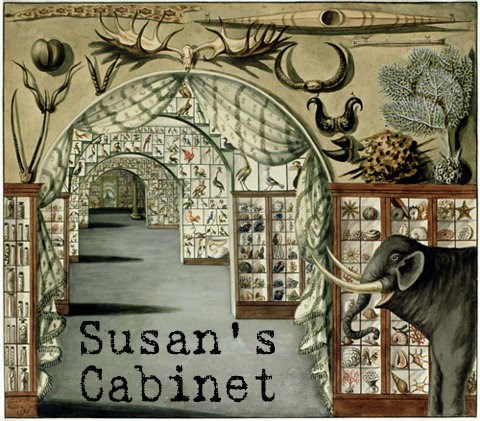 |
Until about twenty years ago,
U.S. Highway 72 went right through downtown South Pittsburg in Tennessee , just across the Alabama Huntsville and Chattanooga was widened, improved, and bypassed South Pittsburg . In order to draw traffic back into town,
city planners devised a cornbread festival, highlighting the town’s major
employer – Lodge Cast Iron. I had never heard of the festival (or Lodge Cast
Iron) until a friend told me about it the day before the 20th Annual
National Cornbread Festival last weekend.
I like cornbread all right, but that
alone would not have induced me to make the 1 hr 15 min drive from Huntsville
 |
| People were parked out on the 72 later in the day. |
The festival’s website has
specific instructions for how to enter the town from the south – follow them!
(Better yet, arrive nice and early.) I
missed the turn and had to wait over 10 minutes just to make a u-turn at the
next light where people were entering from the north. It was packed. When I got back on
track with the directions I had an easy time getting into town and found a
parking space right across the train tracks from the Lodge foundry, so I began
my day with that free tour. It was great!
 |
The process starts with this
pile of metal.
|
 |
| One of two induction 9 metric ton steel shell
furnaces melt the mixture at 2750-2800°F and tap out 2500 or 5000 lbs into transfer ladles. |
 |
| Transfer ladles - they are moved along above by a crane. |
Apparently, I did seem very interested because one of the workers asked
me if I am a “foundry person.” When I answered “No” he said that surely I was a
cast iron skillet fan then…again “No.” My husband had one which I eventually
gave away because I didn’t like it. I didn’t know anything about such a tool –
like the fact that you can cook stuff in it in the oven and that you should not
wash it with soap and water (yes, that’s what I did and food always stuck to
it so I got rid of it in favor of my cheap Teflon-coated pan). Now, I suddenly
have a desire to cook cornbread in a cast iron skillet!
 |
Meanwhile, the Disamatic produces
400 molds per hour from sand,
|
 |
Sand molds are used for one
pour and then the sand is recycled into new molds. The sand starts out white.
|
 |
After the pour into the molds
the sand is broken away and this is what's left.
|
 |
The castings go through shakers
with metal pellets.
|
 |
 |
 |
 |
Voilà!
|
 |
Next, I walked to the nearby
festival grounds ($5 entrance fee) and headed straight to the information booth
to sign up for a historic district tour ($7), given on the hour throughout the
day. I thought it was going to be a walking tour, but it was actually on a
luxury bus and the great great granddaughter of Joseph Lodge was our tour
guide. Afterwards, I walked the route too (to get better photos and for the
opportunity to go inside a couple of the churches). Each year they change what
is covered in the tour so I might be back next year. Here are just a few of the gorgeous homes and buildings in this tiny town of about 3,000 people.
 |
This house was built about
1877. The stone wall was to keep out livestock. It wasn’t until 1926 that the
city passed a law banning free-range livestock in the city.
|
 |
Joseph Lodge’s home (with later additions), built in
1878, now owned by his great great
|
 |
 |
 |
City Hall, originally the First
National Bank, 1887
|
 |
M.M. Allison, the “Father of
the
|
 |
First Methodist Episcopal Church,
1889
|
 |
Beautiful foundation stone
|
 |
Our Lady of Lourdes Catholic
church
|
 |
| F&AM Masonic Lodge, now a flower shop |
Now it was time to check out
the festival grounds on the closed-off streets in the heart of downtown.
 |
The restored Princess Theater
|
 |
A variety of shops and restaurants
are housed in these gorgeous buildings.
|
 |
No need to use these if you
are port-a-potty averse. There are
regular bathrooms
available at the Lodge plant and in the Princess Theater.
|
Several groups offer free cornbread samples. I tried what
looked like a cornbread pancake. The little girl who was serving them said it
is a “fritter.” It didn’t taste much like cornbread; I could have done with
some maple syrup. It was tasty though. I also got some free water and popcorn
in the children’s area. In Cornbread Alley, you can try nine different types of
cornbread for $4. I wanted to do that but I didn’t make it there until late in
the day, and there was a long line in the hot sun. I don’t do long lines,
especially in the sun! Maybe next year.
 |
Cornbread fritters
|
 |
Fun stuff in the kids’ area
|
The festival also includes several cook-offs,
cooking demonstrations, a carnival, arts and crafts vendors, food vendors, and
continuous live music on several stages.
 |
A full-fledged carnival is
here all week
|
The vintage car cruise-in is
located outside the gates of the festival at the Dixie Freeze. I really wanted
to get a chocolate shake here but, again, I wasn’t willing to wait in the long
line. I will definitely stop here for a treat the next time I’m headed
to Chattanooga




















